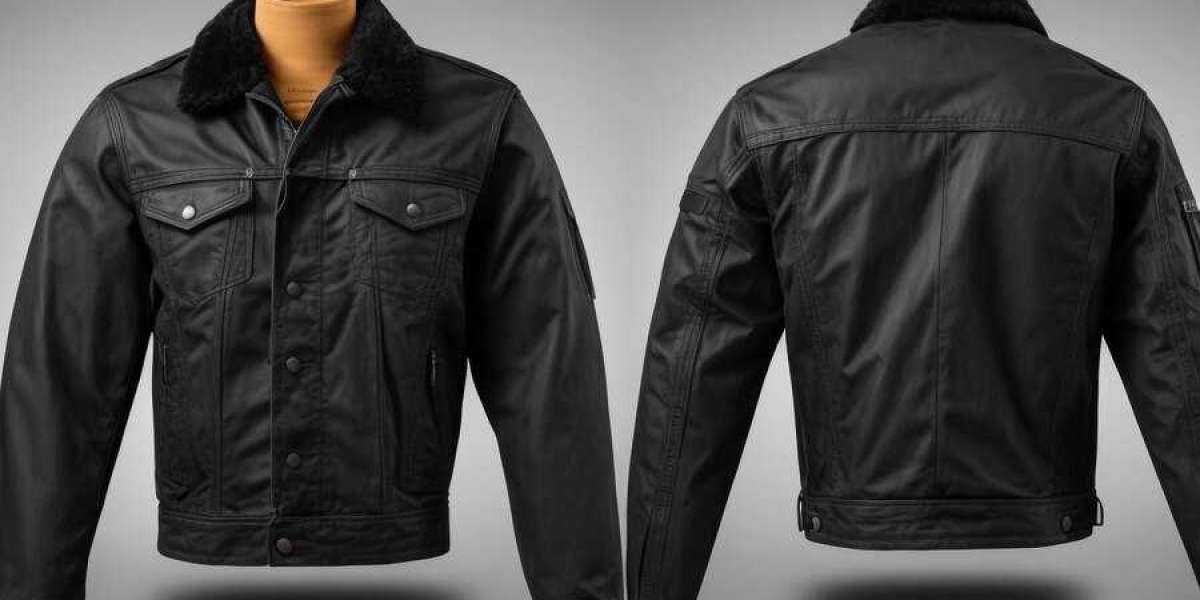Fashion is Men Cafe Racer Jacket much more than just clothing—it’s an art form, a cultural statement, and a reflection of identity. Throughout history, fashion has served as a tool for individuals and societies to express themselves, communicate status, and navigate the social landscape. From ancient civilizations to the modern-day runway shows, fashion has evolved in countless ways, continuously redefining the boundaries of style, creativity, and self-expression.
The Evolution of Fashion
Fashion has undergone drastic transformations over the centuries, often influenced by political, social, and technological changes. In ancient times, clothing was more functional, made from materials readily available in the environment. As civilizations advanced, such as in Ancient Egypt, Greece, and Rome, fashion began to signify status, wealth, and power. People began to use fabrics like silk and wool, and intricate designs emerged, often linked to social hierarchy.
Fast forward to the Renaissance, where fashion became an essential part of European society. Rich, ornate fabrics and extravagant garments reflected the power and wealth of monarchs and the nobility. As global exploration expanded, new materials such as cotton and exotic dyes became widely available, changing how people dressed.
The 20th century brought about a revolution in fashion. The Industrial Revolution allowed for mass production of clothing, making it accessible to a larger population. This era also saw the rise of iconic designers like Coco Chanel, Christian Dior, and Yves Saint Laurent, whose collections reshaped fashion by emphasizing both style and comfort. The late 20th century saw fashion becoming more democratized with the rise of street style, making it possible for anyone to engage with the latest trends.
Fashion as a Form of Self-Expression
Fashion is one of the most personal ways for individuals to express their identity. The way someone dresses can communicate their values, personality, and social affiliations. For some, fashion is a way to align with a particular subculture, whether that be punk, hip-hop, goth, or preppy. For others, it’s about individuality—curating unique looks that stand out and make a statement.
In the modern era, fashion has become an essential part of identity for many. From influencers on Instagram to high-profile celebrities, fashion choices are often seen as a reflection of one’s personality and status. Social media platforms have turned fashion into a global conversation, with millions of people showcasing their personal style, discovering new trends, and influencing the marketplace.
Fashion and Sustainability
While fashion has long been a source of expression and creativity, the industry has also come under scrutiny for its environmental and ethical impact. The rise of fast fashion—where companies produce cheap, mass-produced clothing to meet consumer demand—has led to significant waste, exploitation of workers, and pollution. In recent years, sustainability has become a focal point of the fashion industry, with brands focusing on ethical sourcing, recycling, and the use of eco-friendly materials.
Designers like Stella McCartney and brands such as Patagonia have been pioneers in pushing the envelope on sustainable fashion, creating garments with minimal environmental impact. Consumers are also becoming more conscious of the choices they make, supporting brands that prioritize eco-friendly practices. This shift towards sustainability is not just about protecting the planet, but also ensuring fair wages and ethical working conditions for garment workers.
Fashion and Technology: The Future of Style
The future of fashion is intertwined with technology. Digital advancements are shaping the way fashion is created, marketed, and consumed. The rise of fashion tech, such as 3D printing and virtual fashion shows, is transforming how garments are produced and how fashion experiences are shared. The introduction of virtual clothing and “try-on” technology is also revolutionizing online shopping, allowing consumers to visualize how a piece of clothing will look on them without trying it on physically.
Artificial intelligence (AI) is also playing a role in predicting trends, customizing clothing, and streamlining supply chains. Through data analytics, brands can better understand consumer preferences and create more personalized shopping experiences. This blending of technology and fashion points to a future where style and innovation are intrinsically linked.
Fashion as a Cultural Force
Fashion transcends individual identity and plays an important role in shaping culture. It can reflect social movements, political ideologies, and collective attitudes. For example, the punk movement of the late 1970s used fashion as a rebellion against the status quo, with torn clothing, leather jackets, and bold, DIY designs signaling a rejection of mainstream society. Similarly, the feminist movement used fashion to challenge traditional gender norms, with women adopting pants and suits as symbols of empowerment.
Fashion also connects cultures, with globalization enabling the exchange of styles across continents. Traditional garments, such as kimonos in Japan or saris in India, are often worn in contemporary ways to merge tradition with modernity. This cross-cultural influence brings new diversity and richness to global fashion, with designers from around the world offering their own interpretations of trends and style.
Conclusion
Fashion is a constantly evolving expression of culture, identity, and creativity. From its historical roots to its modern-day iterations, fashion has never been just about what we wear—it’s about who we are, what we value, and how we communicate with the world. Whether it’s the high-fashion runways of Paris, the vibrant streets of New York, or the sustainable collections of the future, fashion continues to shape and be shaped by the world around it. As we move forward, the blend of self-expression, sustainability, and technology will continue to define the way we see fashion, making it a vital and dynamic force in our lives.














